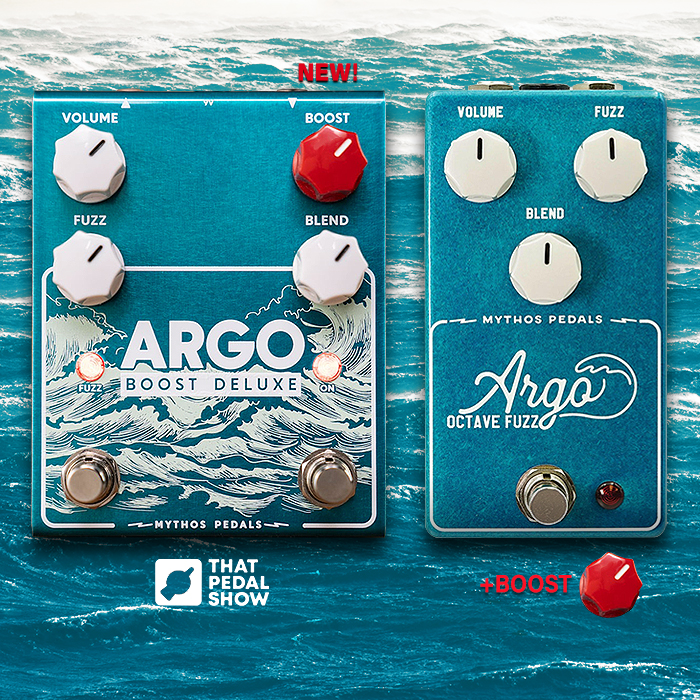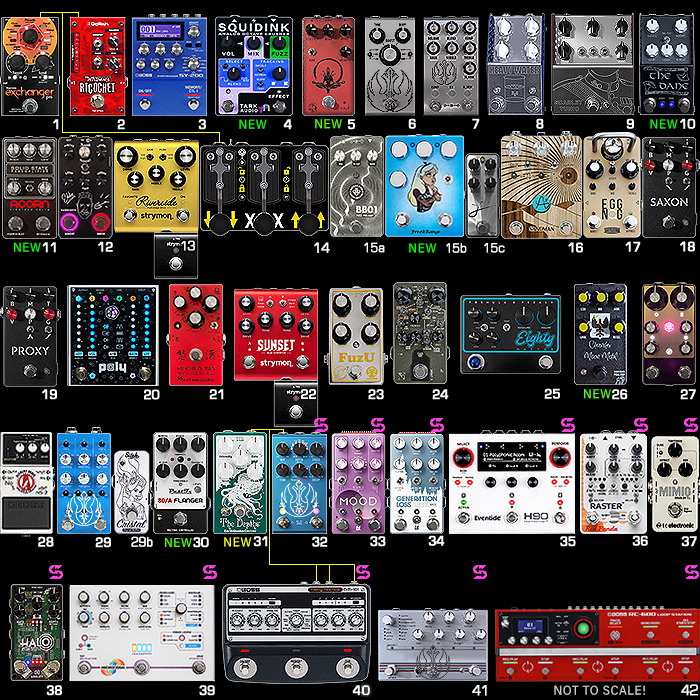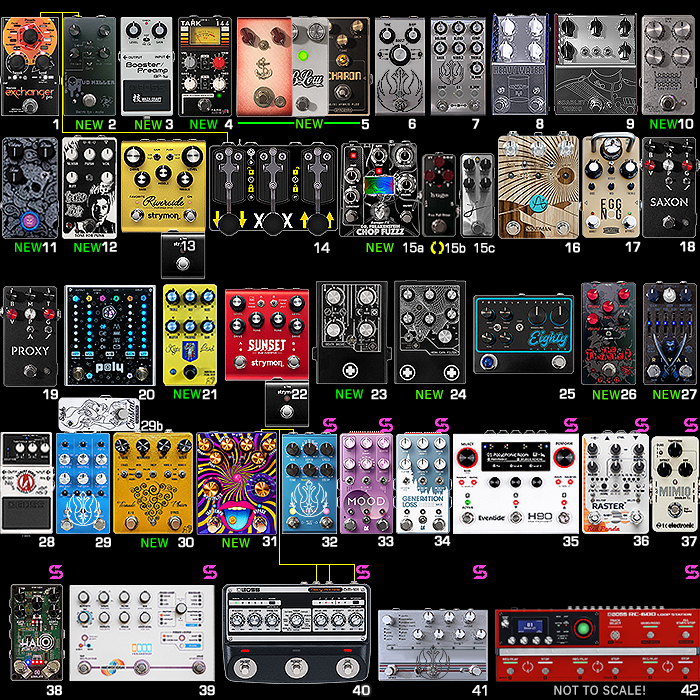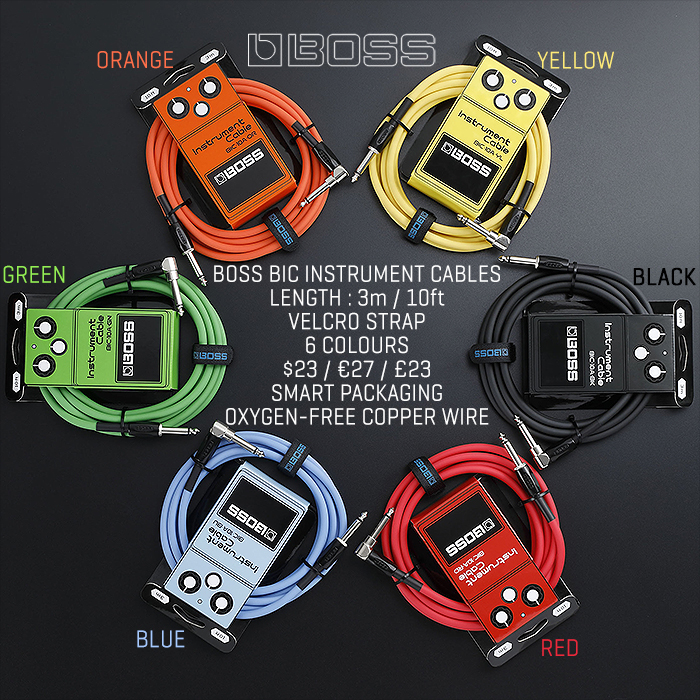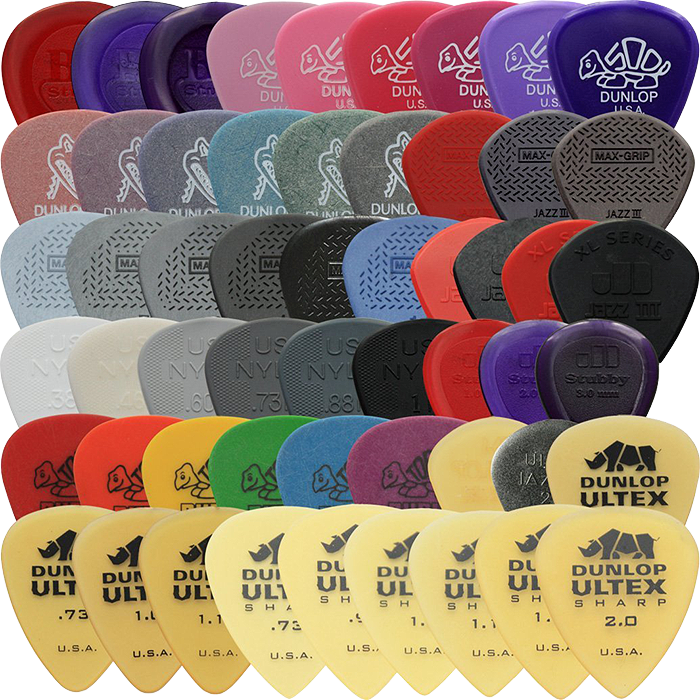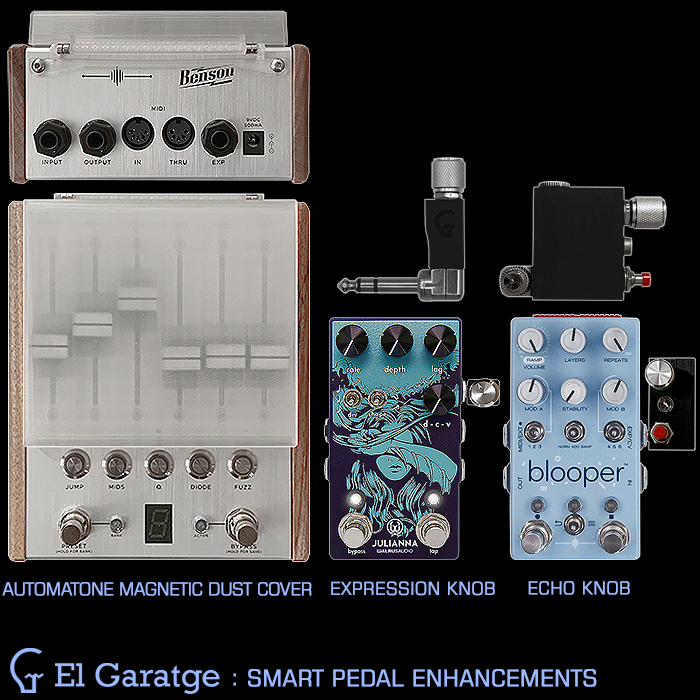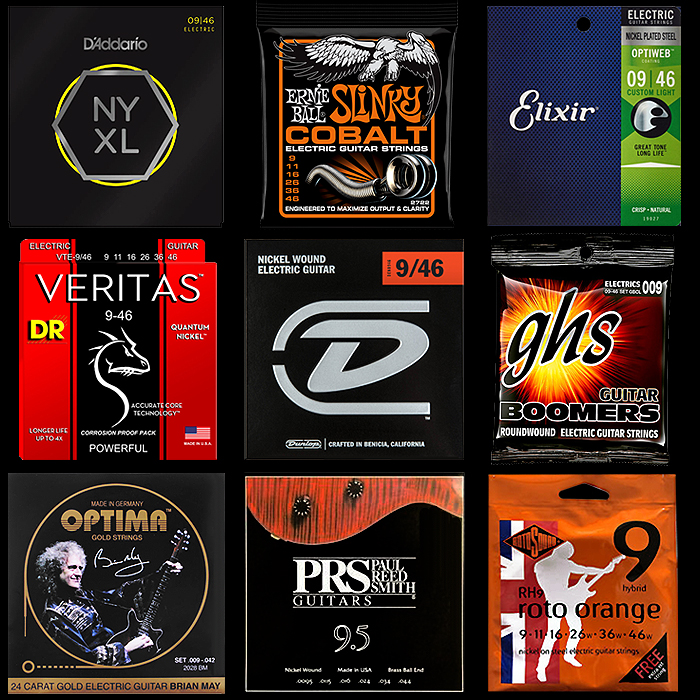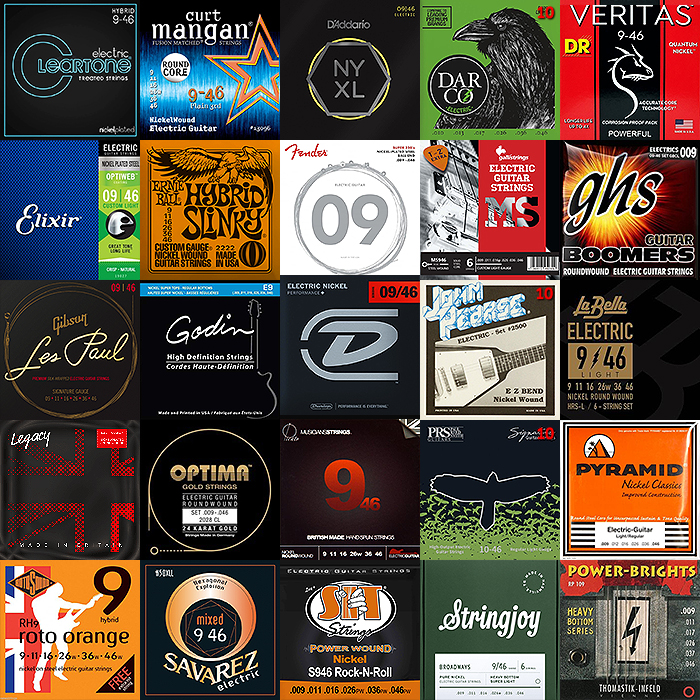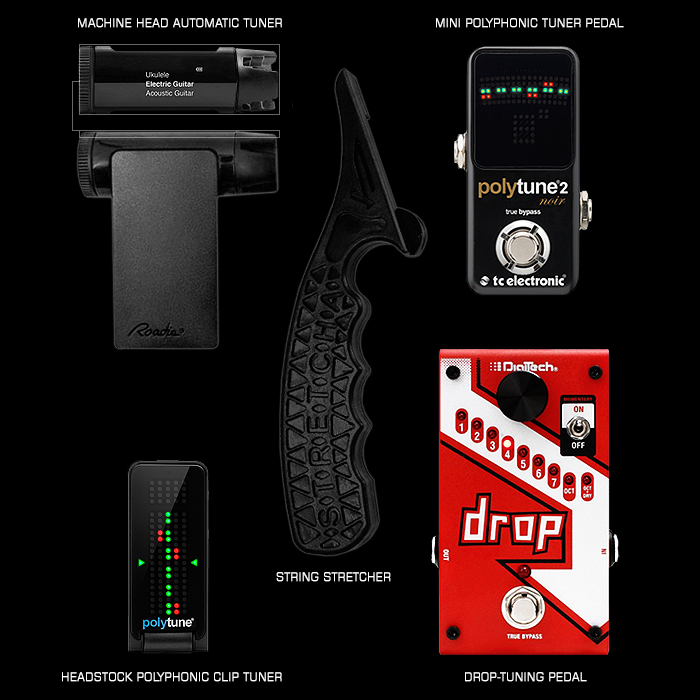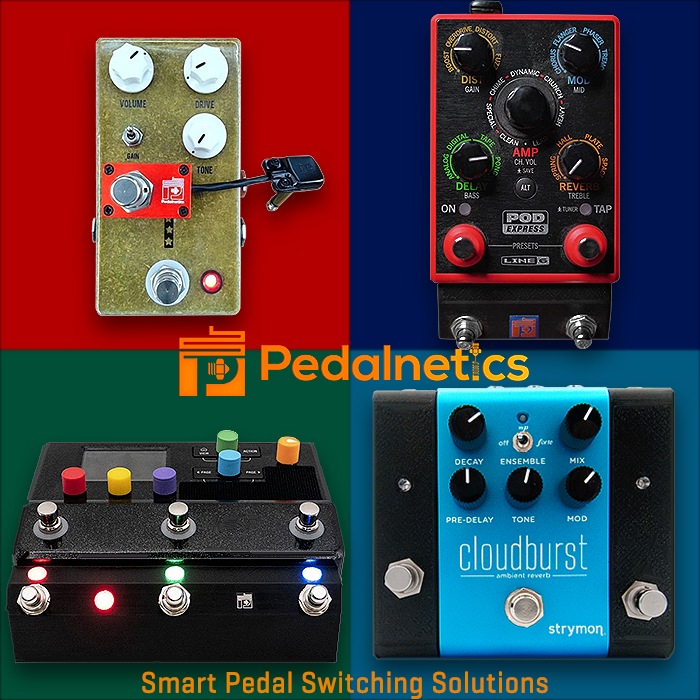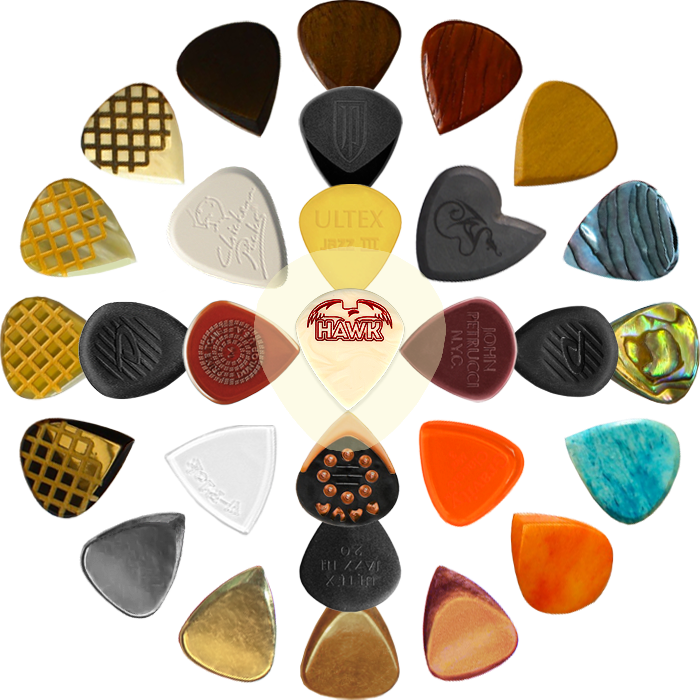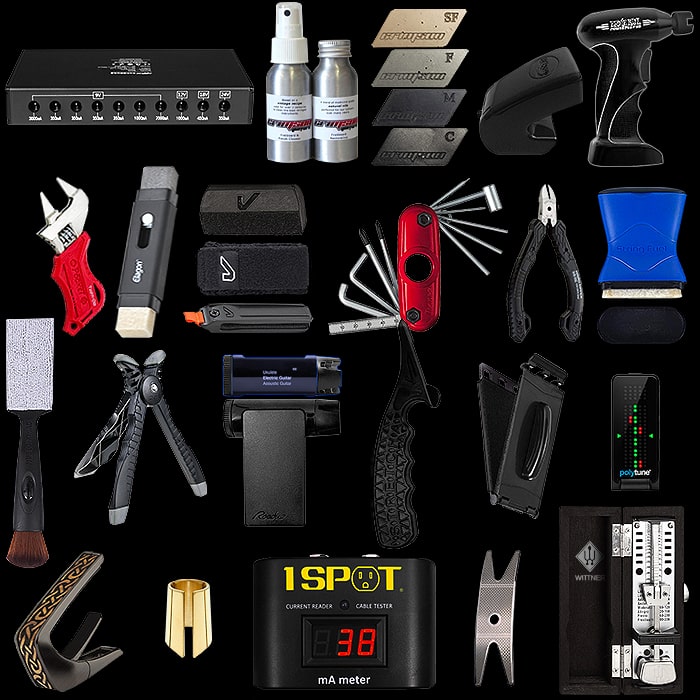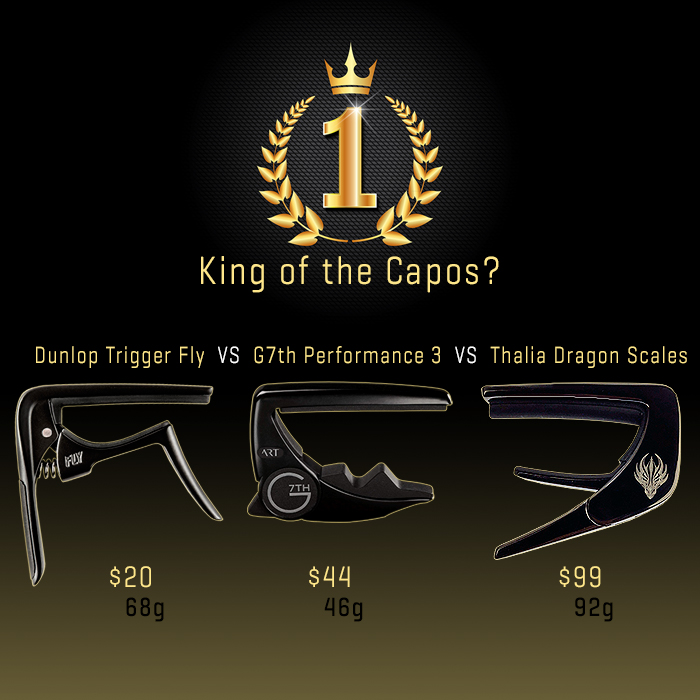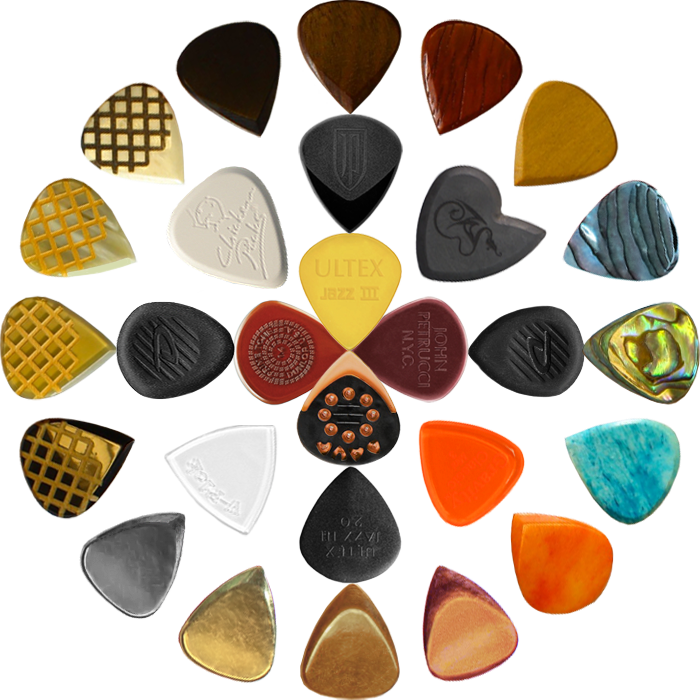Honey Picks Overview - Small / Jazz III size Beehive, Honey Bee and Hornet shapes across Cast Acrylic, Casein, Kirinite and Peek materials
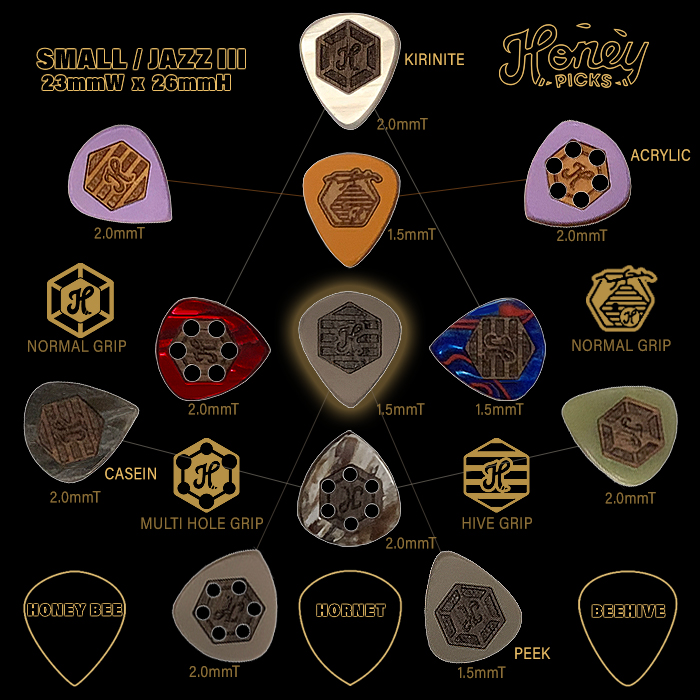
Readers should know that I’ve had a long journey with picks / plectrums over the years and have probably tried a couple of hundred different varieties by now across dozens of brands. None of my exploratory journeys are anywhere close to being finished though - and I’m always delighted when I can check out new and innovative variants - as is the case with these Honey Picks - which with their grip inlays are surely one of the most attractive varieties out there today.
I had glimpsed them somewhat fleetingly a couple of times in the last year or so, but it wasn’t until my friend Jackson Brooksby got some in for a try-out that my interest was fully piqued. I researched the Honey Picks Website in depth - which is actually really easy to navigate - but there are so many options and choices - that it’s still probably best to liaise with the outward facing brother Rick Calhoun - where his sibling Andrew takes care of the various technical matters.
You will know that in my Pick of Destiny articles I fairly quickly found out that I had a preferences for the smaller Jazz III styles of picks - usually between 1.4mm and 2.0mm Thickness - so those were the starting points for this selection.
I wanted to check out as many variations / variants across the 3 shapes of Beehive, Honey Bee and Hornet - as indicated by the outlines in the above visual. Each of these comes with a different style of Grip Inlay - actually Cherry Wood veneers I believe. All mine have Grip inlays - while there are some Honey Picks that do without those also.
All picks in this selection are Small / Jazz III Size - 23mm Wide x 26mm High - of either 1.5mm or 2.0mm Thickness. All have Wood ’Grip’ inlays in 4 types - Normal Surround, Normal Small Hive, Multi-Hole, and Hive (Bars). And all have standard Bevels.
Here follows an overview of what Rick picked out for me - of course against my requested criteria. I would then in my usual way proceed to do a sort of blind test - to figure out which of these 12 worked best for my own preferences - where my reigning pick of destiny / incumbent is currently still the Ivory type Hawk Tonebird 7 (Casein).
CAST ACRYLIC
Acrylic picks are typically brighter, more durable, and produce more volume than typical run of the mill picks.
- Beehive - 1.5mmT - Normal Grip - Orange
- Honey Bee - 2.0mmT - Hive Grip - Purple
- Hornet - 2.0mmT - Multi Hole Grip - Purple
CASEIN / GALALITH
Galalith (Erinoid in the United Kingdom) is a synthetic plastic material manufactured by the interaction of casein (a milk protein / phosphoprotein) and formaldehyde. The commercial name is derived from the Ancient Greek words γάλα (gala, ’milk’) and λῐ́θος (lithos, ’stone’). It is odourless, insoluble in water, biodegradable, non-allergenic, antistatic and virtually nonflammable. It was produced under other names such as Aladdinite (in the US), Casolith (in the Netherlands) and Lactoloid (in Japan). Very close in feel and tonality to real tortoiseshell.
- Beehive - 2.0mmT - Normal Grip - Jade
- Honey Bee - 2.0mmT - Hive Grip - Stone
- Hornet - 2.0mmT - Multi Hole Grip - Moosetracks
KIRINITE
Processed Acrylic Sheet material typically with ribbons of contrasting colours - produces slightly warmer tones than regular Cast Acrylic.
- Beehive - 2.0mmT - Normal Grip - White Pearl
- Honey Bee - 1.5mmT - Hive Grip - Patriot
- Hornet - 2.0mmT - Multi Hole Grip - Red Pearl
PEEK
A super durable thermoplastic - with the scientific name - Polyetheretherketone - incredibly rigid and tough - while smooth and warm sounding.
- Beehive - 1.5mmT - Normal Grip - Natural
- Honey Bee - 1.5mmT - Hive Grip - Natural
- Hornet - 2.0mmT - Multi Hole Grip - Natural

As always I apply the scientific method here - a little similar in the way that wine tasting is carried out - in terms of immediate impressions, in-context impressions and afterthoughts. Duration feel and lasting impression is critical.
Each of the different materials has a different mass / feel and core character / density and they make different sounds in terms of how they strike the strings, and how those strings then resonate thereafter. Some can deliver a sort of click-clack noise on the strings - which is annoying when playing quite passages - while irrelevant for metal players obviously - while there is a critical dual feel component here - of how natural the pick feels between the fingers, how it plays, and how it largely maintains its position between your fingers - in terms of 'stickiness'. My Hawk Tonebirds have a wonderful property in that as you get sweatier - they tend to get stickier - therefore very much keeping the pick properly oriented and secure.
The Tonebirds are warm sounding with maximum articulation - while they also have minimal contact noise with the strings. All those properties combine to make those picks feel like they're just a natural extension of your fingers - so that everything just flows naturally - and you don't need to concentrate on your grip or positioning - just what notes you're playing - and how soft or hard.
I get a little annoyed with those sorts of 'clacky' picks which are too noisy on the strings - which certainly wasn't the case here.
In the above visual / infographic - you can see that in the centre of the visual is a cluster of 5 picks with one in the centre - where the pick of destiny in that selection is the 1.5mm Thickness Hive Grip Peek Honey Bee - that was the one that felt the most natural to me - both at the start and end of the playing cycle. In fact it was almost as good as my Ivory Tonebird - but not quite - that is just another sliver of a degree of stealth above the excellence of the Peek material.
Interestingly there are 2 different treatments of Casein and I have both the glossy ones - similar to the ones here, as well as the more Matt Ivory ones - which I think I really kind of prefer.
Moreover in the central cluster we have all 3 shapes featured - 2 Honey Bee, 2 Hornet and 1 Beehive - also each of the different materials - 2 Kirinite, 1 Acrylic, 1 Casein, and 1 Peek.
I found the Multi Hole Grip the 'grippiest', while overall I think I seemed to mostly favour the Hive Grip's combination of grip and comfort.
Also I think that overall it's the 1.5mm Thicknesses that are my favourite here - so for the next round I would probably just select 1.5mm Thickness ones all with the Hive Grip.
I still have several Honey Pick materials to check out - ABS, Carpenter Bee, Delrin, Richlite, and Ultem - but not all come in my preferred 1.5mm Thickness - which means no suitable Carpenter, Delrin or Ultem options exist. ABS is only at 1.5mm and of singular colourway, while Richlite has some colour and thickness options.
So for the next round - I would take 3 each of ABS and Richlite (my usual shapes) - with the Richlite ones each in a different colour. And then I would probably order 3 more Peek 1.5mm Honey Bees, with one each of Beehive and Hornet - again all at 1.5mm - with standard bevels etc.
There's no denying that the Honey Picks are exceptionally well designed and manufactured - properly top quality throughout - right through to the service side. I really appreciate Rick's input here too.
I'm certainly not done with Honey Picks yet - and probably have another round left after this one.
It's cool how each of these mini trials helps refine your palette further - and helps you decide what you don't like as well as what you do.
The odd thing is though that it's always a combination of factors that are important - as the final 5 cluster shows - and it's the combination of materials, shape, size and thickness that overall wins out - never just one aspect - and there can often be some very fine margins.
You need to play it like at an opticians - where you just keep A/B-ing one compared to another - and the winner stays on - until you have an immovable candidate.
The one aspect I haven't covered yet is the pricing angle - and as these are very much hand-made and hand-finished with a high degree of a precision and inlays - they have to be at the pricier end of the pick scale.
My chosen 4 material types are all priced in £ on the site (could not figure out how to change that) - they are priced per material and thickness typically (but not always!).
- Cast Acrylic at £4 per pick for 1mm, up to £9.54 for 5mm Thickness
- Kirinite at £12 per pick for all Thicknesses
- Peek at £13 ($16) per pick for 1mm, up to £20 ($25) for 3mm Thickness
- Casein at £16 per pick for all Thicknesses
For comparison - my Hawk Ivory Tonebird 7's (1.4mm) are at £12 per pick - while they obviously don't have any Grip Inlays.
I've actually really loved my Honey Picks experience so far - which is why I will be going back for more. They're of course pricey - but these are solid and robust picks and should last me a good while. Where the experience of trying out all those different varieties is of course invaluable.
I can certainly see Honey Picks there at the top of my tree alongside my Hawks, Timber Tones and Dunlop Ultem / Ultex types - in fact there are quite a few more brands in my rotation - while those 4 should still occupy the lion's share!

















